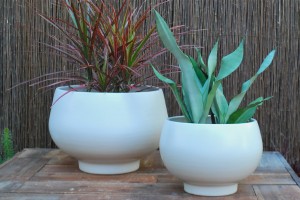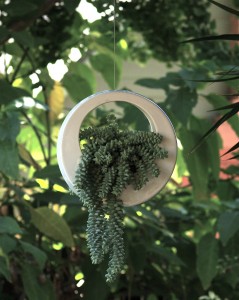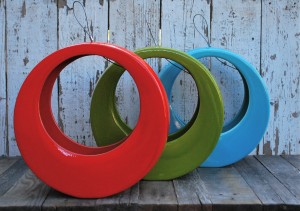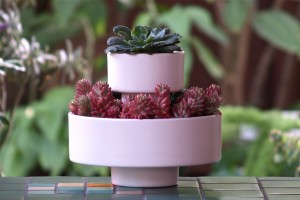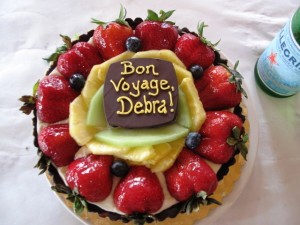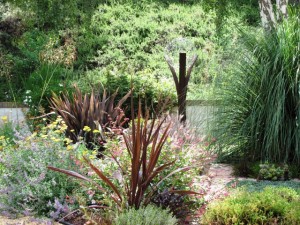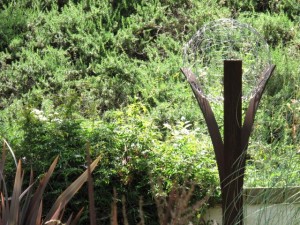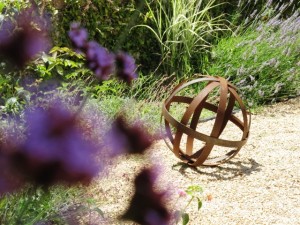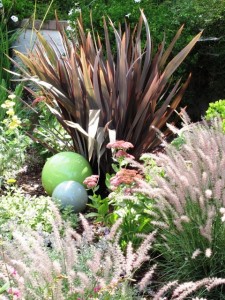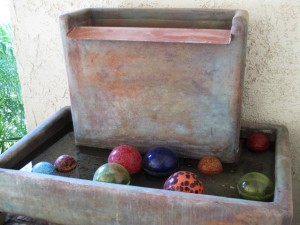The Julius pot is back — and with it a tale about just how hard it’s becoming for California designers to manufacture their latest looks locally.
In 2009 Annette Gutierrez and Mary Gray, owners of Potted in Atwater Village, introduced the Julius — “a modern, sexy pot with a curve and a little pedestal,” Gutierrez said, and a tribute to the late architectural photographer Julius Shulman. Back then, Potted worked with a small, local ceramics factory to produce the planter. “We did a couple runs, and then he went out of business,” Gutierrez said.
In its short life, the retro planter was popular with landscape designers who liked how it graced the poolside and the patio. The Julius was used at the Geffen Playhouse and in the model residences at the W in Hollywood.
“It was our best seller, but suddenly we couldn’t find anyone locally to make it,” Gutierrez said.
So the Julius was shelved as Gutierrez and Gray looked for another local manufacturer who could turn out consistent colors and forms in small quantities. “Every year, the number of Los Angeles ceramics factories has dwindled,” Gutierrez said. “And because of its size, the larger Julius design doesn’t even fit into most local kilns, so that made it even more difficult.”
Potted recently teamed up with Steve Gainey to reintroduce the Julius in aqua, avocado and matte or glossy white ($149 for a 16-inch-diameter pot, $89 for a 12-inch). Gainey is a third-generation California ceramics maker and president of LaVerne-based Gainey Ceramics, a 60-year-old venture that is one of the last ceramics factories in Southern California. He said he recently changed his business strategy after losing a large percentage of his commercial customers.
“My established banking, real estate and shopping mall market has gone away, but we’re a versatile facility that’s able to change,” Gainey said. “I decided we needed to focus on consumer products and reach out to artists in the ceramics community who have no ability to produce their designs otherwise.”
The Potted partnership is one of several similar arrangements with local artists who appreciate that Gainey is high-quality and homegrown. Gainey said he also has started producing his own designs, including a vase called X-Factor, which the American Museum of Ceramic Art in Pomona recently added to its permanent collection.
Gainey’s embrace of the consumer market follows the national success of Janek Boniecki, who in 1998 acquired the original Bauer Pottery facility in Highland, reissuing classic Bauer pieces for the tabletop and garden, as well as the work of other artists.
Gainey Ceramics also produces Potted’s 12-inch Circle pot ($89), right, inspired by a 1960s hanging ashtray that Gray found at a flea market. Suspended from an 18-inch stainless-steel cable, “it’s perfect for displaying succulents like burrow tails, string-of-pearls or an echeveria,” Gutierrez says.
Earlier this year, Potted and Gainey introduced a matte-white Wedding Cake planter, a three-piece, stacking flowerpot, below. The bottom piece serves as a saucer, while the top and middle “layers” are deep enough to hold plants. The set ($125) measures 11 inches in diameter and is 9.25 inches tall.
“This is our take on the cake platter as a tabletop planter,” Gutierrez says. “Whenever you can lift something up slightly with a pedestal, it looks lighter and fresher.”
Potted plans to develop more products that will be produced by Gainey Ceramics. But Gutierrez is circumspect about the challenge of remaining local while facing the inevitable competition of less expensive knockoffs. “We can’t compete with China on price,” she said. “We can only compete with our originality.”
Potted, 3158 Los Feliz Blvd., Los Angeles; (323) 665-3801.
Gainey Ceramics retail operations, 1200 Arrow Highway, La Verne; (909) 593-3533 or (800) 451-8155.
Link to LA Times @Home story
— Debra Prinzing









